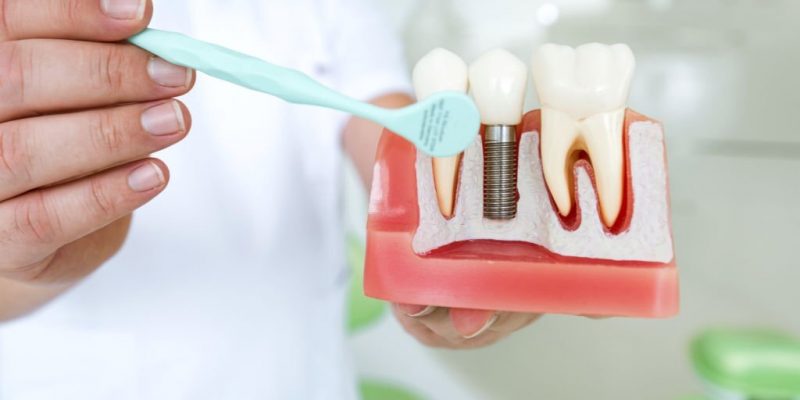With every tooth that falls out or fails, you lose quality of life. A lost tooth significantly impacts how you smile, eat, and feel about yourself.
But thanks to the top teeth replacement option by Navarro Dentistry, dental implants offer to balance your life with a promise of replacing lost tooth with a degree of reliability and stability like natural teeth. Interestingly, however, like anything that permanently impacts your life, getting dental implants for teeth is no small decision.
Opting for dental implants is a big undertaking. You need to gather a lot of information before you finalize the treatment. This blog will walk you through different aspects of dental implants while stating some essential facts about the treatment in the following sections.
Different Types Of Dental Implants
When approaching experts for dental implants in Texas, they’ll suggest either of the three different dental implants based on your current oral condition:
Endosteal Implants
First on our list of dental implants are endosteal implants, one of the most commonly opted oral appliances in the list. They are an excellent option for patients with healthy jaw bones and good oral health. These appliances are shaped like screws to be put into the jaw where the false teeth will fit.
Once the procedure is complete, healing can take one to two weeks. The healing span is necessary to form a muscle around the jawbone and hold the appliance strongly.
Zygomatic Implants
Next, we have the Zygomatic implants, one of the most commonly opted oral appliances for patients with severe bone deficiencies. This structurally long implant anchor in the upper facial bones or the zygoma, giving the name zygomatic implant.
Generally, dentists use this implant tooth procedure when they need to replace all the front teeth at once, rather than replacing individual teeth. This makes it more affordable than individual implants while making them a bit risky due to additional complications.
All-on-4 Implants
Next, we have the All-on-4 tooth implantation, a standard practice that uses four standard implant posts to create a full-arch bridge in place (the setup comprises eight implants to cover your full mouth). This implant is placed in front of the upper jaw, and the mandible is in your lower jaw.
While it is an excellent option for patients and has a much faster approach, the prosthetic bridge created during the procedure is bulkier and less responsive. This makes all-on-4 implants a less-opted option by many patients who want to remodel their smile.
Subperiosteal Implants
Last on our list are the subperiosteal dental implants. They serve as a primary alternative to endosteal implants which, instead of being fixed into the jawbone, rest on top of it. This appliance comprises a metal frame placed under the gum with a post attached.
Once the procedure is complete, the gum around the appliance heals to hold the frame in place. After the process is complete, the false teeth are then secured to the poles attached to the gum. Subperiosteal implants are an excellent option for patients who don’t have enough jawbone to place an implant or want to avoid the invasive dental implant procedure.
So now that you have an idea of the commonly used implants in dentistry let’s debunk some common myths surrounding the oral appliances in the following section.
Common Myths Around Dental Implants
Dental Implants Aren’t As Strong As Natural Teeth
Many people have a common misconception that since dental implants are replacement teeth, they aren’t as strong as natural teeth. However, this is an entirely wrong notion.
Since tooth implantation fixes your jaw as one following successful surgery, it acts more like a natural tooth. The bond formed by implants mimics the connection of natural teeth, giving you the freedom to eat what you want.
The Dental Implants Surgery Is Dangerous & Complicated
Due to the different stages involved in the dental implant process, many individuals commonly believe these oral appliances are complicated. However, it’s the contrary.
Thousands of dentists worldwide perform dental implants as a routine procedure. It does not involve invasive procedures and they can perform it on anyone with a good jawbone and oral health.
It’s Hard To Care For Dental Implants
Considering how implant of teeth is often compared with natural teeth, many think it’s hard to care for these appliances. Interestingly, however, dental implants are nowhere near the same.
Even though they look like natural teeth, dental implants cannot form cavities. Once healed, you can care for them via normal flossing and brushing.
Dental Implants Promote Bone Loss
Bone loss is a natural consequence of tooth loss. The absence of tooth roots during bone loss forces the jawbone to change shape, impacting your aesthetics and overall appeal.
However, this statement is only valid when you haven’t filled the gap with dental implants. Dental implants protect the jawbone and avoid these issues by resembling the form and strength of natural tooth roots.
Now You Know!
Dental implants are an excellent option for individuals looking to regain their lost smile and confidence. Thanks to the different types of dental implants, you can preserve and maintain a youthful appearance.
So now that you have an idea of how dentists for implants help make the most of your life, what are you waiting for? Visit your nearest implant dentist today.
Modify Your Smile With Navarro Dental Center
At Navarro Dental Center, we are a powerhouse of different cosmetic operations. Our dental implant procedure brings you the most effective and realistic results while keeping up with your quality of life. Make your appointment today or call us at 903-872-1661 to know more.



